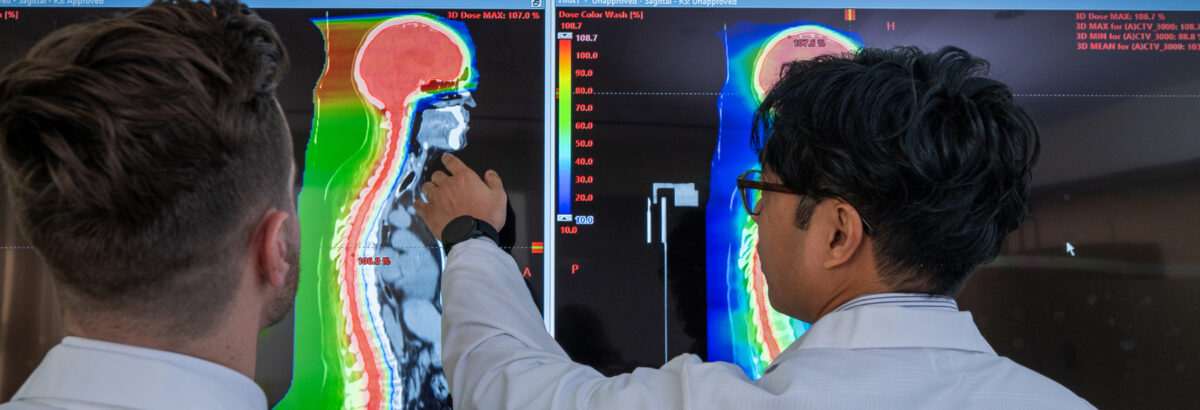Minimizing Risk to Nearby Tissues
Because the esophagus is so close to the heart and lungs, traditional radiation can have a significant risk of serious short- and long-term side effects. Proton therapy for esophageal cancer can deliver a higher dose of radiation to the esophageal tumor and relatively little or no radiation to nearby normal tissues, minimizing the risk of those side-effects, and reducing the risk of radiation-induced heart and lung damage.
Due to its precision, proton therapy can also treat patients with recurring esophageal cancer, providing excellent tumor control and with much less radiation to nearby critical organs than conventional radiation. A large study published in the Journal of Thoracic Oncology found that treatment with pencil beam scanning proton therapy is a safe and effective option for patients who previously received radiation for esophageal cancer or for a tumor in another organ located in the chest.
Esophageal Cancers We Treat Include
- Adenocarcinoma
- GE junction tumors
- Squamous cell carcinoma
Tumor Locations
- Cervical Esophagus
- Gastro-Esophageal Junction
- Thoracic Esophagus
Study: Less Toxicity in Esophageal Cancer
How proton beam therapy has demonstrated significantly reduced toxicity and adverse events in patients with esophageal cancer
Pencil Beam Scanning at the New York Proton Center
Patients at our center receive pencil beam scanning, a highly sophisticated and the most modern form of proton therapy. It uses an extremely narrow beam of protons to “paint” the intended radiation dose onto the tumor. The technology can target specific parts of the tumor with different radiation dose levels, while better protecting the surrounding normal tissues from irradiation.
Not All Proton Therapy Is Created Equal
Many other proton centers use “volumetric” beams that deliver a fixed quantity of energy to the entire tumor. But the pencil beam scanning technology at the New York Proton Center delivers “intensity-modulated proton therapy,” or IMPT.
Widely considered the most advanced form of proton therapy, IMPT can target different parts of the tumor with different radiation dose levels based on the prescription and the tumor’s exact location, while better protecting the surrounding normal tissues from irradiation. That’s particularly valuable when treating the most complicated tumors, those residing in the fissures of the head, neck and skull base.



